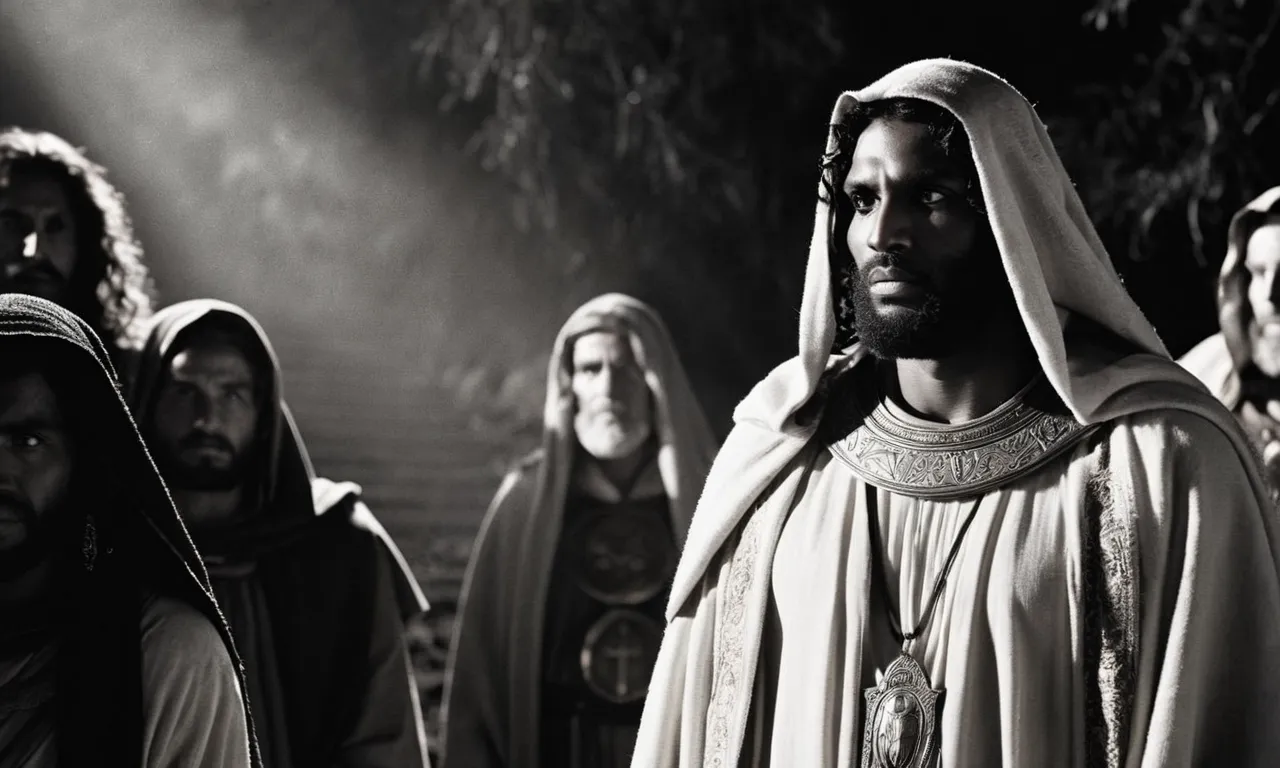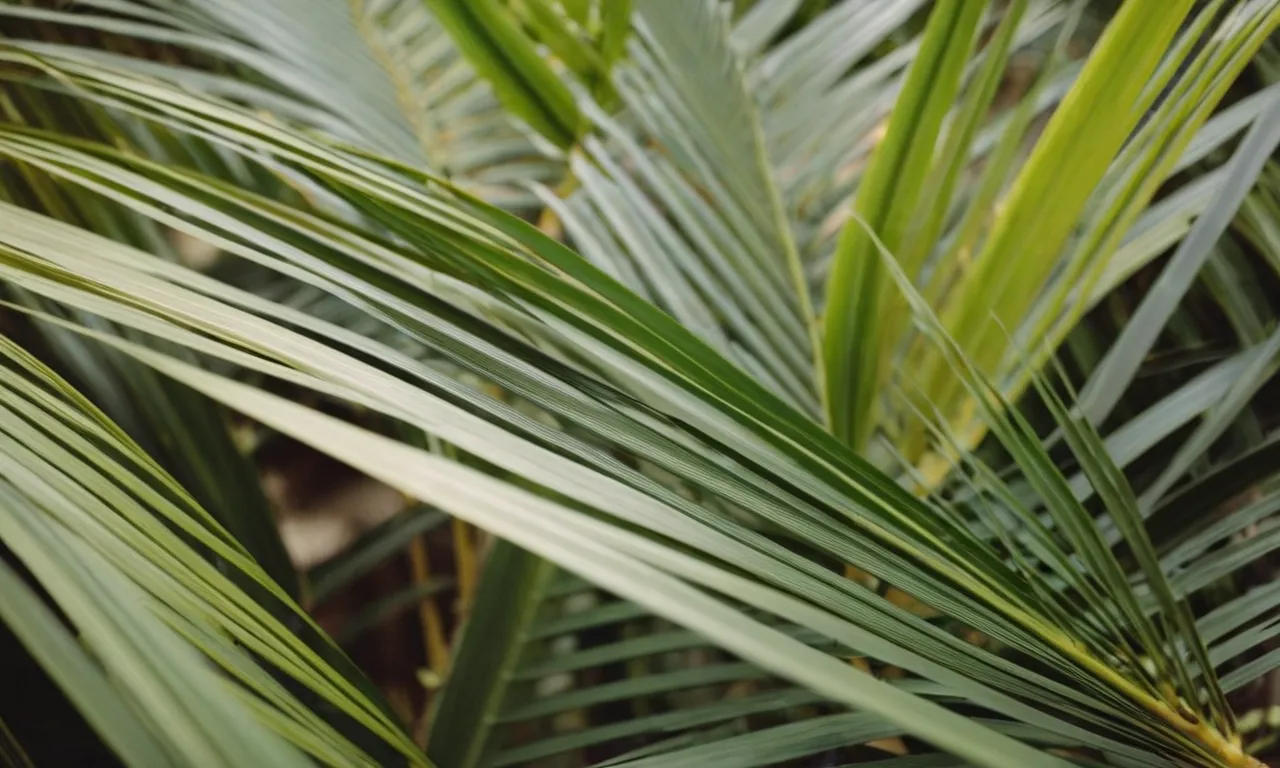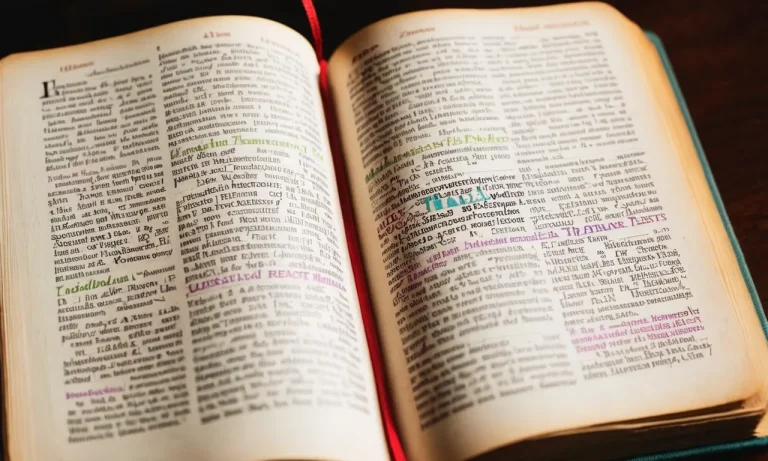Why Did They Use Palm Branches For Jesus?
The biblical account of Jesus’ triumphal entry into Jerusalem has become one of the most iconic moments in the story of his life. As Jesus rode into the city on a donkey, the crowds laid down palm branches in his path and shouted ‘Hosanna!’ But why palms?
If you’re short on time, here’s a quick answer to your question: Palm branches were a symbol of triumph and victory in ancient Jewish culture. Laying palms before Jesus as he entered Jerusalem was a way for people to recognize him as the Messiah they had been waiting for.
In this comprehensive article, we’ll explore the history behind the use of palms in biblical times and look at the significance of their use in Jesus’ triumphal entry.
We’ll examine the meaning of palms in ancient Jewish culture, why people may have chosen them to welcome Jesus and the symbolism behind laying palm branches before a king or conqueror.
With an understanding of the cultural context, we can better appreciate the imagery and meaning behind the account of Jesus’ entry into Jerusalem.
The Significance of Palms in Ancient Jewish Culture
Palms as a Symbol of Victory and Triumph
In ancient Jewish culture, palm branches were a widely recognized symbol of victory, triumph, and glory.
When someone had achieved a great victory in battle or accomplished something worthy of honor, people would wave palm branches to celebrate them.
We see this custom mentioned several times in the Hebrew Bible.
For example, when Simon the Maccabee recaptured Jerusalem from the Syrians in 141 BCE, the people welcomed him back by waving palm fronds (1 Maccabees 13:51).
Palm branches were also one of the elements of the Festival of Booths (Sukkot), which commemorated God’s protection of the Israelites during their wilderness journey (Leviticus 23:40).
The Palm Branch in the Feast of Tabernacles
The Feast of Tabernacles was one of three pilgrimage festivals when Jews would travel to Jerusalem. As part of the feast, worshippers processed around the altar holding palm fronds along with branches from other trees (Leviticus 23:40).
The palm branches were a reminder of the temporary shelters or “tabernacles” God provided for the Israelites in the wilderness.
Interestingly, palm branches discovered in the Judean Desert from around the time of Jesus still had all their leaves attached to them.
This has led some scholars to suggest that when Jesus entered Jerusalem at the Feast of Tabernacles just before his death, people may have waved intact palm fronds to welcome him.
This background helps explain the use of palms when Jesus entered Jerusalem the week before his crucifixion.
Palms in Ancient Coinage and Art
Palm branches were also a common symbol on Jewish coins minted during the Great Jewish Revolt against Rome (66-73 CE).
Ancient synagogues and tombs unearthed in Israel feature palm imagery as well. For example, an elaborate golden palm frond formed part of the menorah decorating the ancient synagogue at Capernaum.
Palm branches also adorned Herod’s temple in Jerusalem before it was destroyed by the Romans.
In all, palm branches had rich associations with victory, deliverance, glory, and God’s protection over his people in Jewish history and culture.
Their use to celebrate Jesus’ entry into Jerusalem makes perfect sense when we understand this background.
The gospels present Jesus as the long-awaited Messiah, and the palm branches symbolize the victory and deliverance Jesus would accomplish through his death and resurrection.
Why Use Palms for Jesus’ Entry into Jerusalem?
Jesus as the Fulfillment of Messianic Prophecy
When Jesus entered Jerusalem riding on a donkey the week before his death and resurrection, the crowds welcomed him by laying down palm branches in his path (John 12:13).
This act likely symbolized the fulfillment of Old Testament prophecies about the coming Messiah, such as Zechariah 9:9: “Rejoice greatly, Daughter Zion!
Shout, Daughter Jerusalem! See, your king comes to you, righteous and victorious, lowly and riding on a donkey, on a colt, the foal of a donkey.”
Palms Recognizing Jesus as King
In the ancient Near East, palm branches were a symbol of triumph and victory. By laying down palm branches, the people were recognizing Jesus’ claim to be the long-awaited King of Israel.
Palms had been used to welcome victorious kings and leaders in previous historic Jewish celebrations, such as during the Hasmonean kingdom and the retaking of Jerusalem by Simon Maccabees in 141 B.C.
So the symbolic meaning was clear – the crowds were welcoming Jesus as royalty.
The Meaning of Laying Palms Before a Ruler
Laying items like palm branches or even cloaks on the road before a ruler was an act of homage and submission. 2 Kings 9:13 records people spreading their cloaks on the steps for King Jehu, shouting “Jehu is king!” It showed the people’s acceptance of Jesus as the messianic King sent from God.
The branches themselves were a cheap, readily available material that Jewish pilgrims carried to celebrate the Passover feast.
So laying the palm branches signaled both purposeful symbolism towards Jesus’ identity and used what the people already had on hand.
Interestingly, laying palm branches was a specifically Jewish and Middle Eastern practice. Contrast this to the Gentile wise men from the East bringing expensive gifts like gold and frankincense to honor the child Jesus as King (Matthew 2:11).
Both acts symbolized worship of Jesus as the prophesied King, but through cultural symbols familiar to the people at the time.

The Triumphal Entry and Jesus as Conquering King
Palm Branches Welcoming a Victorious King
When Jesus entered Jerusalem on a donkey the week before his crucifixion, people welcomed him by laying down palm branches and their cloaks in his path (John 12:13).
This imagery echoes royal processions described in 1 and 2 Kings, where people strewed their garments and palm fronds to welcome victorious kings (2 Kings 9:13).
Just as the palm branches signify triumph, honoring Jesus in this way shows the people identifying him as a conquering king arriving in the holy city.
The Imagery of Palm Branches in Revelation
The palm branch as a symbol of celebration and homage continues in the final book of the Bible. In Revelation 7:9, saints worshiping God wave palm branches, connecting back to the honor shown to Jesus in the Gospels.
This signals victory and glory for these servants of God coming out of the great tribulation.
Later in Revelation, palm branches appear again along with references to the Messiah. The great multitude referenced in chapter 7 returns in 19:6-9 with palm branches and cries of “Hallelujah!”
They rejoice and praise God for the impending “marriage supper of the Lamb.” Their palm branches affirm Jesus’ identity as the conquering Messiah they celebrate.
Jesus as the Messiah Entering Zion
When the crowd welcomed Jesus into Jerusalem with palm branches, they connected his entry with Old Testament prophecies about the Messiah. Palm branches were part of celebrating pilgrimage to the temple, especially during the Festival of Tabernacles commemorating Israel’s journey in the wilderness.
Zechariah’s prophecy links the Messiah with a king riding on a donkey’s colt and calls specifically to “rejoice greatly” and wave palm fronds to greet him (Zechariah 9:9).
The Gospels portray Jesus’ entry into Jerusalem connecting him with these expectations of the Messiah’s coming just a few days before Passover.
The specific word used for “branches” in John 12:13 indicates palm fronds and echoes phrases used for cutting branches to celebrate the Festival of Tabernacles.
By laying down palm branches, the people welcome Jesus by recognizing him as the long-awaited Anointed One of God arriving to Jerusalem as prophesied.
Conclusion
The palm branches laid before Jesus as he entered Jerusalem carried deep cultural meaning for the people of his time. By laying palms in his path, the crowds affirmed Jesus as the prophesied Messiah and king coming to claim his throne in Jerusalem.
The palms recognized his victory over sin and death and welcomed the eternal king coming in triumph.
When we understand this context, the imagery behind the triumphal entry comes alive and we can better grasp the significance of this pivotal moment in Jesus’ life and ministry.








